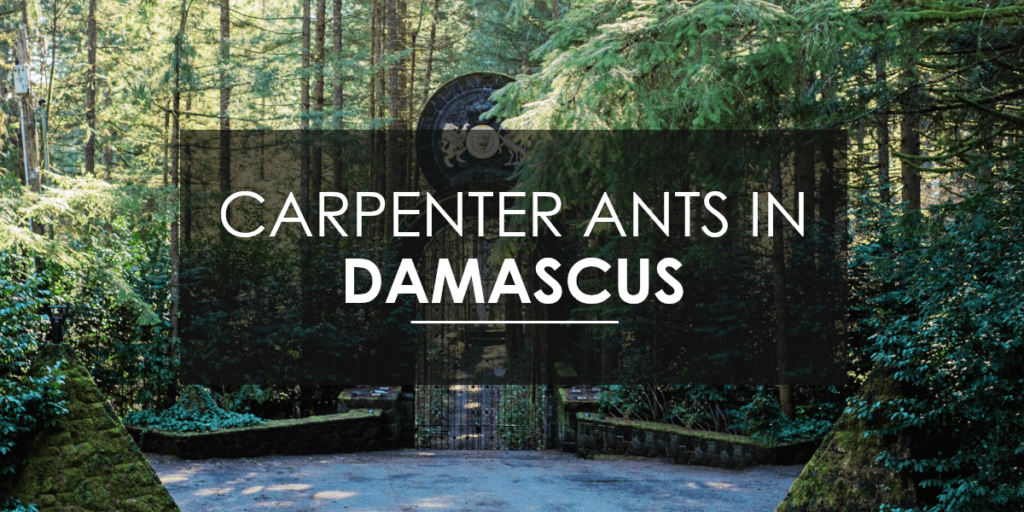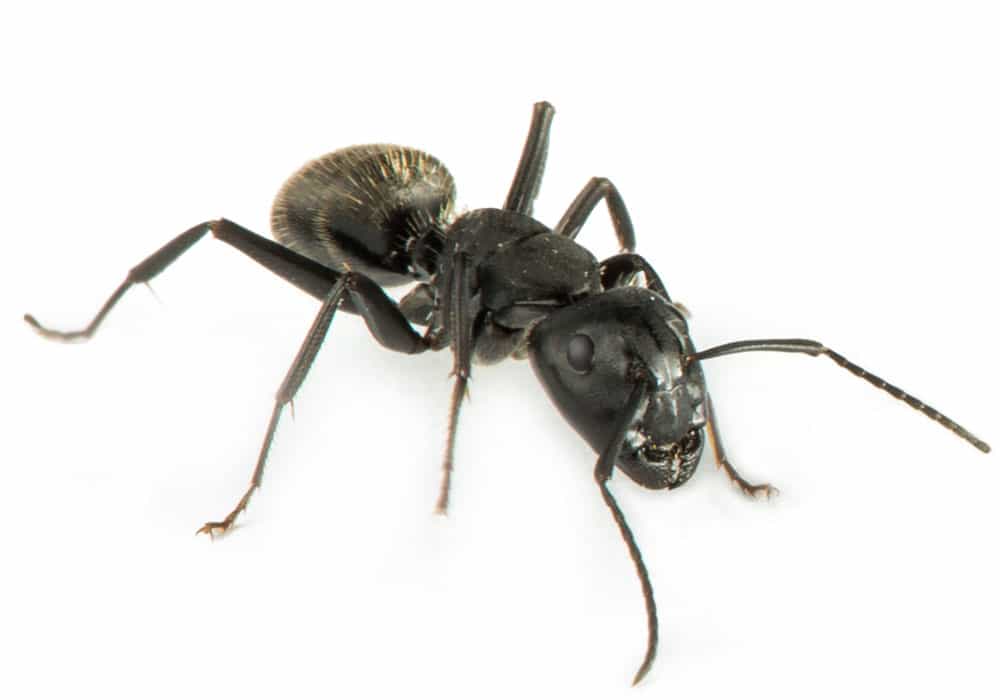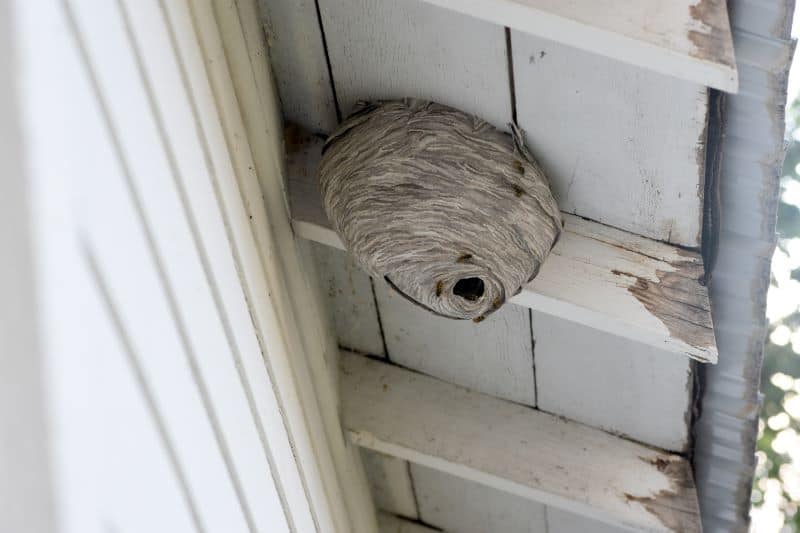Despite the gray skies that define the cooler months in the Pacific Northwest, they can’t take away from the beauty of the forested land and beautiful homes that define Lake Oswego. The winter months have little impact on the city’s activity. Winter is a wonderful time of year in Lake Oswego and our community fully embraces the season.
From a full schedule of plays and performances at the Lakewood Center, to a number of seasonal events at the Oswego Heritage Council, Lake Oswego is an active and vibrant community throughout the year.
But as the weather begins to cool and the outdoor environment becomes a little bit harsher, a less welcomed seasonal event may sometimes occur. Mice begin to enter homes and businesses. It’s this time of year that Aspen Pest Control begins to receive an increased number of phone calls from local residents requesting assistance with mice control.
Why are mice a problem in fall and winter?
Most mice actually prefer to live outdoors. Mice are able to survive across a wide variety of temperatures, but they exert extra energy when the daytime temperature begins to dip below 65 degrees.
When the seasons begin to shift in Lake Oswego and the warm summer months transition to the cool and rainy fall and winter months, mice seek shelter and reliable food sources. Unfortunately, the source of both food and warmth is often inside of our homes and businesses.
What are signs of a mouse problem?
You’ve probably heard the saying “if you see one mouse, there are more.” Unfortunately, this is almost always the case. No home ever has just one mouse. Wild mice are social creatures and they do not live alone.
Mice also breed throughout the year and they breed often. In just a single year, one female mouse can have over ten litters of baby mice. Each litter typically produces 7-8 babies, so you can imagine how a small mouse problem can quickly turn into a full blown infestation very quickly.
Aside from catching a glimpse of an actual mouse, there are a number of signs that indicate that mice are present:
- Mouse droppings – these are ¼” or smaller, brown, and pointed on both ends
- Teeth marks on walls, cupboards, and furniture
- Gnaw marks and torn packaging on food
- Sound of scampering in walls and other scratching like noises usually at night
- Household pets staring intently at a wall for no apparent reason
- Rub marks on walls from the natural oil present on mice
- Strong scent of urine in high traffic mouse areas
- Signs of mouse nesting materials
- Broken pipes and damaged HVAC
Mice are a danger to both humans and household pets. Mice have the potential to spread quite a few serious diseases and they also seem to have a preference to gnaw on electrical wiring. A mouse infestation can then lead to severe house fires.
Are mice dangerous?
Mice carry transmittable disease
Mice carry many diseases that are transmittable to humans and pets through mouse bites, contact with live and dead mice, contact with nesting materials, and contact with urine and feces.
Hantavirus, a potentially deadly respiratory virus, is passed on to humans when dust containing mouse waste becomes airborne and is inhaled into the lungs. Early symptoms of Hantavirus include nausea, vomiting, dizziness, and headaches.
Mice also carry Salmonella in their digestive tracts. Salmonella can be passed on to humans when the rodent’s are active in the kitchen. The presence of mouse urine or feces on food preparation services is one of the most common ways that Salmonella is passed from mice to humans.
Leptospirosis is a bacterial infection that is spread through the urine of infected animals. Leptospirosis is a serious disease and the symptoms are often confused with other illnesses. Some infected people experience no symptoms. The disease can lead to kidney damage, meningitis, breathing problems, liver failure, and in extreme cases, death.
A local woman woman is currently suing Pacific Foods of Oregon, LLC when she became violently ill after eating a bowl of soup. The woman discovered a “mouse intestine-like foreign object” in the box of soup after she consumed half of the carton and became ill.
Mice chew electrical wires
The teeth of mice are constantly growing, so mice will gnaw on almost anything to control their growth. The hard material of electrical wiring is an appealing surface.
Hazardous conditions arise when mice chew through the protective coating of the wiring, causing electrical outages, shorting out appliances and activating security systems. Even more dangerous, mice can chew through to the copper that is found inside of wires. If that copper comes into contact with paper, cloth, or wood, the hot copper can ignite the dry material, causing a fire in your home. Although the risk of fire may be relatively low, many homeowners feel it’s a risk not worth taking and will contact an exterminator for professional mice control and mice removal services.
How do I get rid of mice in my home?
Trapping and poisoning are the two main options for mice control. Trapping, although more labor intensive, can yield favorable results especially when done in conjunction with a thorough baiting program. Another consideration in preventing reinfestation of rodents to a home or business is sealing up points of entry. While it’s impossible to completely “rodent proof” a home through “exclusion” methods, it’s a good idea to try and cut off the paths of least resistance in and around a structure.
How to use mouse traps
Mouse traps work great, but you must ensure that you’re using enough traps. Always buy more traps than you think that you need.
Place the traps in areas of high mouse activity. This is where you’ve noticed mouse droppings and other signs of mice presence. Mice prefer to run along walls, so place the traps along the walls, with the bait end of the trap facing the wall.
It’s a common myth that mice prefer cheese. Bait traps with nuts, seeds, peanut butter or candy. A cotton ball soaked with a little bit of vanilla flavoring is also a good bait option.
How to use mouse poison
Poison and bait stations can be an effective means of eliminating a mouse problem, but in rare cases their use can also lead the mice dying inside your home in inaccessible locations. Even the “safest” of poisons can be dangerous to humans and pets if not used according to the product label, so it’s incredibly important to read and follow the safety precautions very closely.
If using poison inside of a home, it’s important that it is placed in an area that pets and children can not access. The poison should also be in a tamper resistant container and secured to a surface so it cannot be removed.
We understand that for many people trapping and baiting correctly can be a daunting task. Many homeowners, for example, prefer not to inspect and treat their own crawl space which is a critical step as the crawl space is often the “epicenter” of a rodent infestation. That’s why we recommend people call us to have a pest control professional take care of the pest problem, without missing a crucial step.
How do I clean up after a mouse infestation?
After you have rid your home or business of mice, it’s important to conduct a thorough cleaning. The Centers for Disease Control and Prevention publish guidelines for cleaning up following a rodent infestation.
The CDC recommends first venting the area by opening windows and doors to the outdoors. Allow the area to air out for at least 30 minutes.
Cleaning up mice droppings
Wearing latex or vinyl gloves and using a solution that is one part bleach and ten parts water, spray mouse droppings, oil marks, or any other hard surface areas that have seen the presence of mice with the bleach solution. Let sit for at least five minutes and clean up with a paper towel.
Cleaning carpets and furniture when mice have been present
Any carpet or furniture that has come into contact with mice should be steam cleaned. Clothing or bedding that has come into contact with mice should be washed on hot with laundry detergent. Dry on high heat if possible for a full hour.
Cleaning up dead mice or mice nests
When cleaning up dead mice or mice nests, spray the bleach solution on the mouse body or the nesting material. Let sit for at least five minutes. Wearing vinyl or latex gloves, place the dead rodent or nesting materials into a plastic bag and seal tightly. Place into a trash receptacle that is regularly emptied.
Who can I call to address a mouse problem in Lake Oswego?
Aspen Pest Control LOVES serving our Lake Oswego community including family homes and businesses. We have successfully treated many homes in Lake Oswego for mice. We offer free, no pressure estimates and same day service for no extra charge. Our results are 100% guaranteed and we use products that are safe for your family and pets. Contact us to discover why your neighbors in Lake Oswego are loyal customers of Aspen Pest Control.








